-

Originally Posted by
Simon P

I spent the first 6 months of my apprenticeship just just hacksawing & filing, we then progressed on to using the old elliot shaping machines, then lathes & mills etc. 30 years later these skills come in handy for making parts & repairing these old guns. Once you learnt how to file correctly you never forget!!!
Simon, Did you forget the scraping? thats all I remember on the fitting benches, scraping everything flat, before you could even start to mark out, then the filing could commence.
After 6 months on the fitting benches we moved on to the machines, then to the electrical section, the sheetmetal section, then back to fitting benches, to continue with brazing , hydraulics etc. After 10 -12 months they then let us out into the shipyard.
A few other big companies in the area sent thier apprentices to train with us, as at the time it was considered one of the best training centres in the North West.
Last edited by bigduke6; 04-03-2011 at 04:23 AM.
-
-
04-02-2011 07:13 PM
# ADS
Friends and Sponsors

-
Advisory Panel



Originally Posted by
Simon P

I spent the first 6 months of my apprenticeship just just hacksawing & filing, we then progressed on to using the old elliot shaping machines, then lathes & mills etc. 30 years later these skills come in handy for making parts & repairing these old guns. Once you learnt how to file correctly you never forget!!!
AMEN- had to teach an OJT kid how to spring a file to get a flat surface last week- and he's all but done, coming through our military system!
I served my time in a coal mine. We had two old lathes and a shaping machine, two large drill presses. Probably how I learned to not let lack of equipment stop you from doing anything, it just slows you down. I made a fly cutter for one drill press, with a locking tab to secure it in the Morse taper. After doing a couple of milling jobs with it, I convinced the Engineer we needed a milling machine- he bought a manual cross feed vise!
I even made a pneumatic powered portable line borer from scratch with a motor and reduction boxes off roof bolting drills. Saved the company $hit loads on man-and-machine hire to do jobs on site.
These days you cannot make anything, you cannot use anything that isn't commercially made, and no-one is willing to jump through the many hoops that OH&S has put up that stop us from using our trade to the fullest potential. I feel that the "thinking trade" of fitter machinist is destined to become a "read the book and follow the bouncing ball" type job taught in two weeks and concerns one type of operation on one type of machine per person... sweat shop style.
Sad.
rant mode off...
-
Thank You to Son For This Useful Post:
-
-

Originally Posted by
Son

I feel that the "thinking trade" of fitter machinist is destined to become a "read the book and follow the bouncing ball" type job taught in two weeks and concerns one type of operation on one type of machine per person... sweat shop style.
Sad.
Hit the nail on the head with that one Son, just before christmas I had to explain to a recent qualified Engineer what a bearing scraper is.
-
-
Legacy Member


Originally Posted by
bigduke6

Simon, Did you forget the scraping
Bigduke
After scraping the Vees slides on our 32ft bed Butler planing machine its a nightmare I was trying to forget !!!
It sounds like we done similar apprenticeships, we also done a bit of carpentry as well as spending time in the blacksmiths forge, great for cooking your breakfast in the fire each morning..
I still work for the same company & our training school is still there but scaled down, except our apprentices only do a 2 year NVQ based apprenticeships.
Last edited by Simon P; 04-03-2011 at 04:10 AM.
Regards Simon
-
-
Advisory Panel



Originally Posted by
bigduke6

Hit the nail on the head with that one Son, just before christmas I had to explain to a recent qualified Engineer what a bearing scraper is.
They should be made serve ten years as the T/A (trades assistant) in whichever industry they are to work in before any tradesman has to take instructions from them.
-
-
For the benefit of the non English readers, those NVQ qualifications you read about are one of the 'qualificatioins' that are meaningless but look good...., a bit like GCSE's. The NVQ actually stands for '.......not very qualified......'
In our local newspaper there was a big thing about new apprentices starting somewhere. It was a second hand cycle repair shop for 6 weeks...... 6 weeks................ I spent that amount of time filing great lumps of mild steel into stupid 4 way shapes!
The GOOD bit about the old apprenticeships was that if you went further and to Uni, then you were pretty well exempt the first year of rubbish that you already knew and had practiced for years and years..............
But many years down the line, I recently went to our technical stores to get a box of light bulbs to do the general maintenance things myself instead of waiting....., you know the sort of thing.......... To be told that now that commercialisation and whatever else they call it has taken over, I can't do these jobs because I'm not qualified and a contractor has to be called in. I said to the girl behind the counter............. Well, I can't tell you in polite company what I said to her but later that afternoon I took down and showed the Tech Stores manager my paperwork starting at school and onwards. Sadly it didn't include a bulb changing certificate and licence. But it's Sunday morning, it's warm and sunny so you've got to laugh..........
Last edited by Peter Laidler; 04-03-2011 at 06:37 AM.
-
-

Originally Posted by
Simon P

It sounds like we done similar apprenticeships, we also done a bit of carpentry as well as spending time in the blacksmiths forge, great for cooking your breakfast in the fire each morning..
Thought I,d dig out some of the bits I still kept, The only carpentry we did was for the handles(which started as square blocks of wood) on the bearing scraper and screwdriver, the basis for these were old files that were cooked and cooled slowly, the only bits we were given for the tools below was the screws, which were knocked out by who ever was on the capstan, you can tell how old the designs are by the screwdriver profile.Even the wing nut was hanmade.
The jaws in the pliers was a good test, after bending and rivoting the insert it was best to file the jaws first then clean up the rest, a few tears were shed for those who left the teeth for last, same went for the tool makers clamp when testing the hacksaw skils.
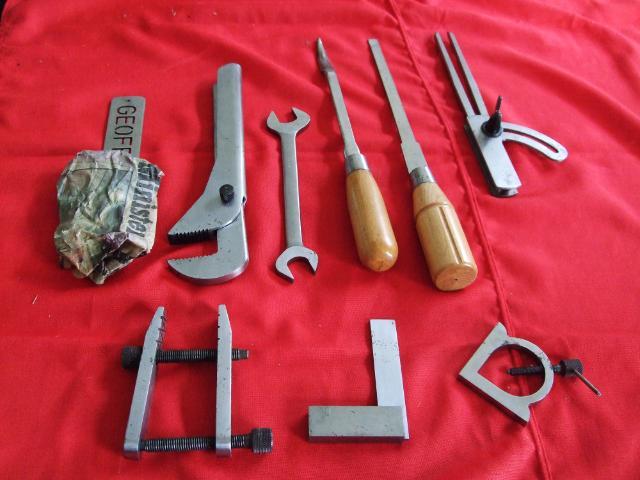
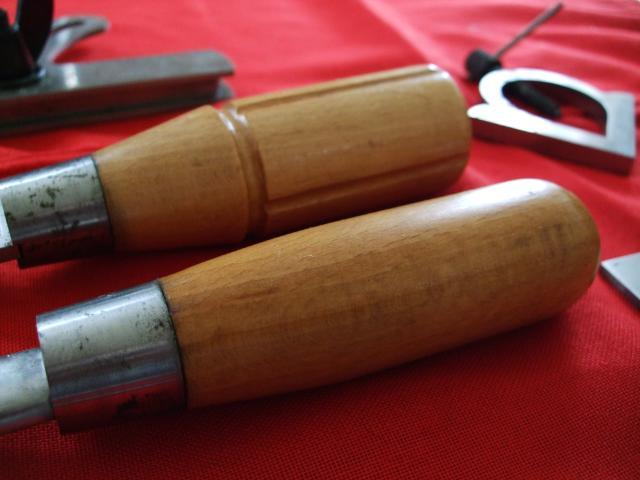
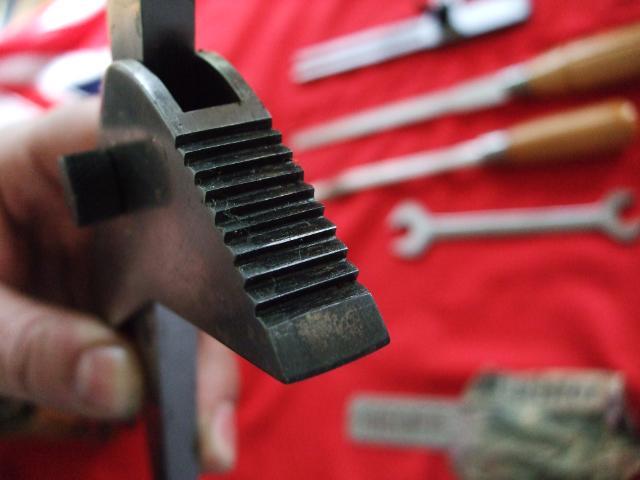
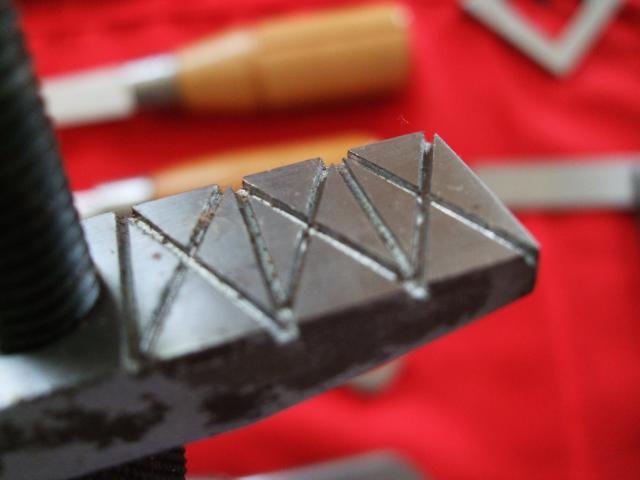
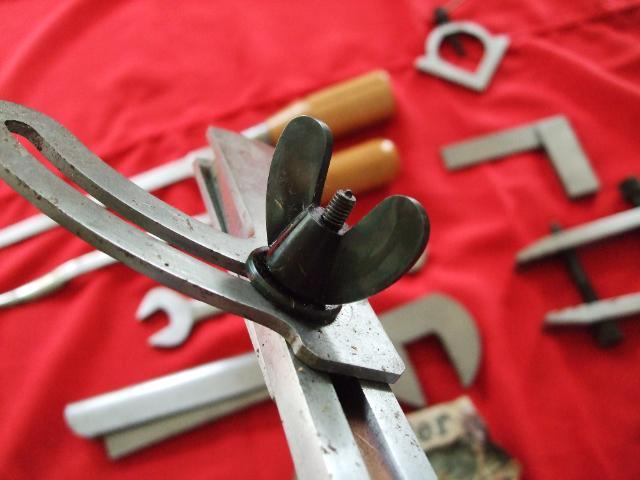
-
The Following 4 Members Say Thank You to bigduke6 For This Useful Post:
-
FREE MEMBER
NO Posting or PM's Allowed

My enfield man cave in action a year or two back, and thats a carbon fiber thingy on a 66 ishapore. Now that was an accurate rifle!
-
Second range test yesterday at 300m. Rifle grouped 5 rounds in about 12" from prone with sling(8" wide, 12" vertically), unsupported. Group was about 18" right, so I've made a correction on the foresight and the foresight is now all the way over one side. Didn't have a chance to shoot again after adjustment. If the rifle is now zero'd, I'll shoot some groups off some bags to better gauge accuracy.
I'll be very happy if I can get reliable 2MOA (6" at 300m) groups off the bags. I'm hoping that quite a bit of the group enlargement is due to me and my lack of regular use of standard No1Mk3 sights. Shooting off sandbags will help too.
-
-
Advisory Panel


Second range test yesterday at 300m. Rifle grouped 5 rounds in about 12" from prone with sling(8" wide, 12" vertically), unsupported. Group was about 18" right, so I've made a correction on the foresight and the foresight is now all the way over one side. Didn't have a chance to shoot again after adjustment. If the rifle is now zero'd, I'll shoot some groups off some bags to better gauge accuracy.
I'll be very happy if I can get reliable 2MOA (6" at 300m) groups off the bags. I'm hoping that quite a bit of the group enlargement is due to me and my lack of regular use of standard No1Mk3 sights. Shooting off sandbags will help too.
Just a quick comment from my own experiences shooting with slings... I found that I couldn't ensure I was wrapping into the sling with the same tension each time- probably because I wasn't getting regular enough practice to have developed a feel for the sling. Shooting with a sling I was getting groups stinging vertically as the rifle warmed up, and even when hot couldn't achieve anything close to a good group. I removed the sling and start doing all my shooting without, and just with the foreend resting on my open left palm- no grip at all. This seemed to eliminate the vertical stringing and tightened my groups from every shooting position.
Please take into account I am a middle order B grader at best. But I found the tension taken downward at the front swivel, with the foreend across the hand just forward of the front trigger guard screw seemed to mess with the bedding. Once again, when hot it shouldn't matter as long as everything is the same for every shot, but I had separate groups printing many inches apart vertically and could have only been from altered sling tension.
-

















 PM
PM















